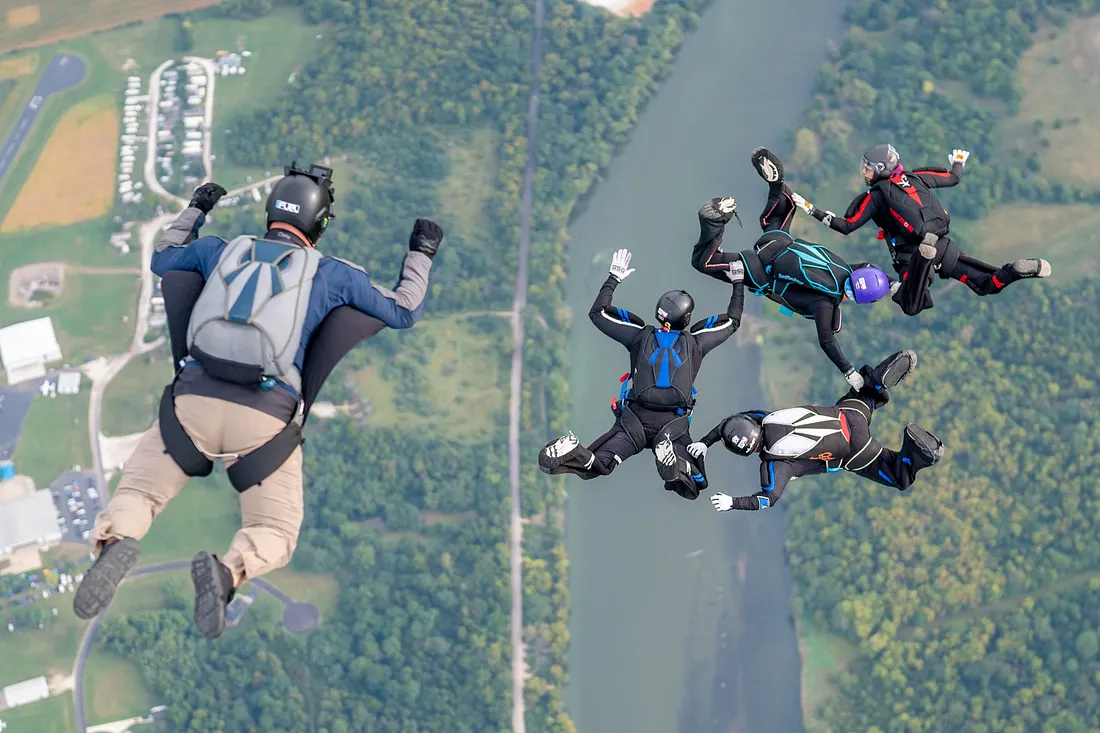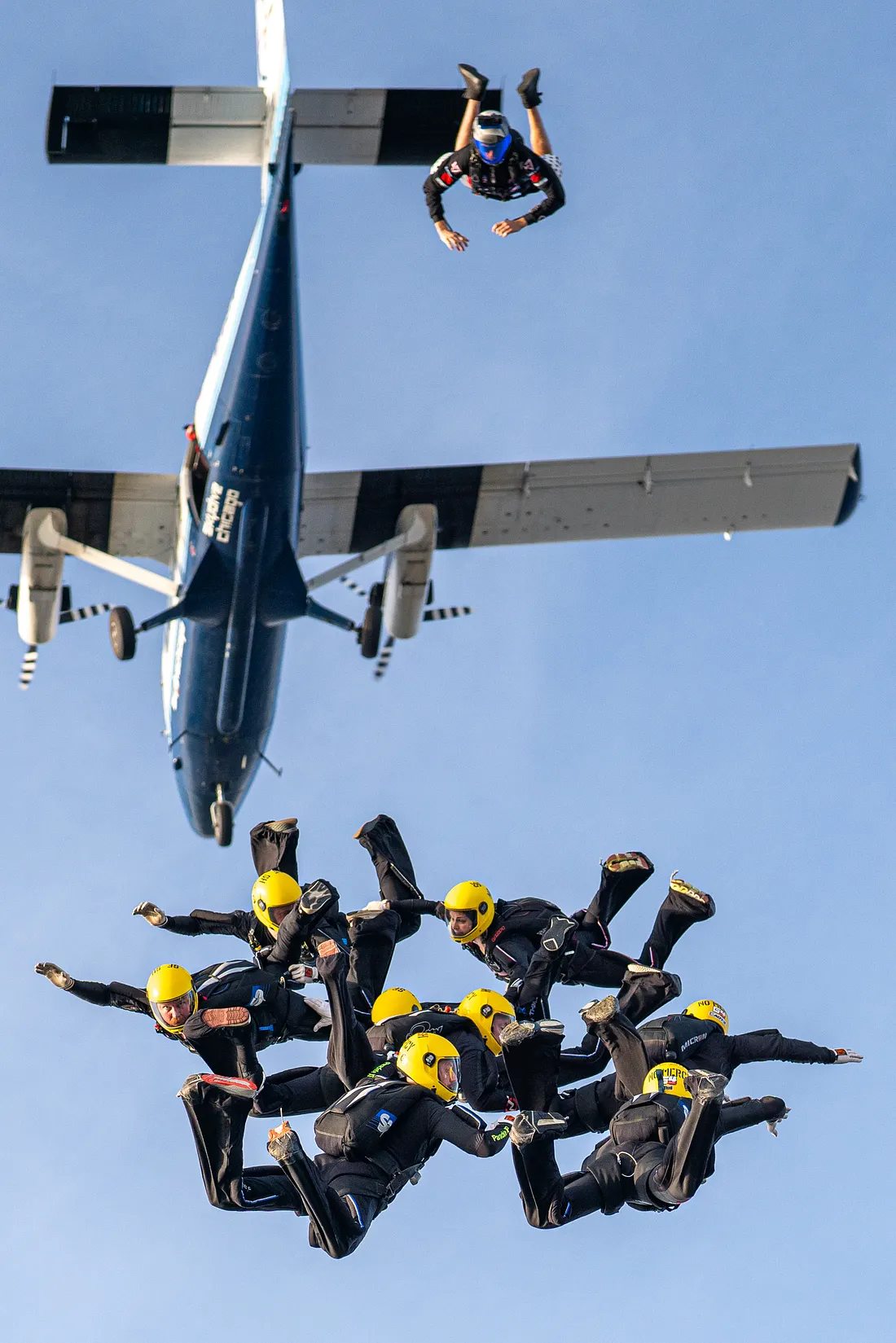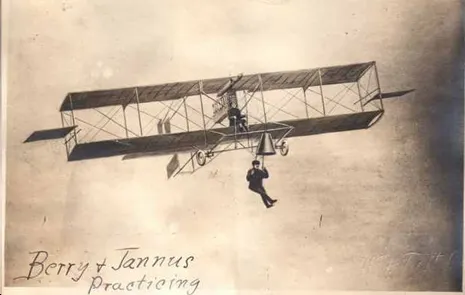Propelling Parachute Safety

Mike Millard will never forget the heart-stopping moment when his third parachute training jump went awry.
“I left the aircraft, and I wasn’t perfectly stable,” the FAA Aviation Safety Inspector recalled. “I was experiencing some tumbling in freefall, which was a disorienting moment where your body is not aligned with the airflow, and you’re flipping end over end. In that situation, it’s critical to stay calm and remember your training.”
Millard received that training at the U.S. Air Force Academy, where he served as a quality assurance inspector. “That experience drove home how much control you need to have in freefall and how critical it is to stay calm and not panic,” he said. “Even when things feel out of control, you focus on the process, regain stability and move forward to a successful outcome.”
Today, Millard leverages that valuable experience to help improve parachuting safety, through his work as a subject matter expert on Part 105 parachute operations. He and his colleagues in the Flight Standards General Aviation Section work closely with the U.S. Parachute Association to support its safety outreach with parachutists and parachute operators. That partnership is paying big safety dividends: parachute-related fatalities fell to a record low of nine last year out of an estimated 3.88 million skydives in the United States.

The FAA plays an important role in ensuring parachuting safety through oversight of aircraft, equipment and personnel. The agency sets specific standards for aircraft maintenance and operation, pilot certification and parachute system maintenance. Our employees work with drop zone operators and airport management to establish safe landing areas and address airspace concerns. And FAA Flight Standards District Offices periodically visit skydiving centers to audit operations and inspect aircraft and equipment.
From a safety perspective, parachuting poses unique risks, including those involving the operations of the aircraft (i.e., maintaining proper balance, pitch and speed and avoiding other aircraft near airports), and the activity of the skydivers leaping out and deploying and handling their parachutes. The steady decrease in annual parachute-related fatalities from an average of 42.5 in the 1970s to single digits today is largely due to FAA safety measures, improved equipment and training, advances in emergency response techniques, and a strong safety culture in the parachuting community.
Millard said several safety advances are making a difference. These include simulators with virtual reality goggles that input wind and weather conditions at particular airports, parachutes that automatically open if a jumper blacks out, instructors on the ground talking parachutists through jumps with the aid of earbuds and wind management apps that detail current wind conditions.
“Having an industry that is so active on safety is very valuable to us,” said Millard. “Back in the 1970s the skydiving community was a wilder group. Now you see a lot more professionalism. The industry is reaching out to me to say, ‘How can we do this better?’”

Last year the U.S. Parachute Association voluntarily adopted a safety management system for its members who operate drop zones.
“Our SMS Division said that it is pretty impressive,” Millard added.
The FAA also does direct outreach with the Parachute Industry Association’s annual symposium which Millard said provides drop zone owners and participants in the parachute industry the opportunity to “receive training and safety briefings and communicate with the FAA as a group if they have concerns.”
Millard, who earned his Senior Parachute Rigger certificate at the Montana Smokejumpers facility, views one of his most important roles as serving as a resource for fellow aviation safety inspectors.
“I love taking calls to help educate our inspectors how to show operators where items are in FAA guidance,” he said. “Don’t hesitate to reach out.”
A Moment in History: How the Parachute Age Began

Parachuting began fairly early in the aviation age, when on March 1, 1912, a daredevil U.S. Army Captain, Albert Berry, took a leap into the abyss.
In the skies over Jefferson Barracks Army Base near St. Louis, Missouri, Berry began his attempt by sitting on a trapeze bar dangling from the front of the Benoist pusher-type airplane piloted by Tony Jannus, who two years later became the first airline pilot. At an altitude of 1,500 feet, Berry grabbed a parachute from a cone-like contraption placed above his head, attached the parachute to a harness and made his jump.
“Berry gave a quick jerk of a rope and with the parachute shot downward, while the aeroplane, first bouncing up like a cork, suddenly poised and steadied itself,” wrote an eyewitness reporter. “Hundreds of watchers held their breath as Berry shot toward the earth, the parachute tailing after him in a long, snaky line. Suddenly the parachute opened, the rapidity of the descent was checked, and amid cheers, the first aviator to make such an attempt lightly reached the ground.”
Visit the FAA’s Skydiving and Parachute Operations page for more information on parachute safety.
